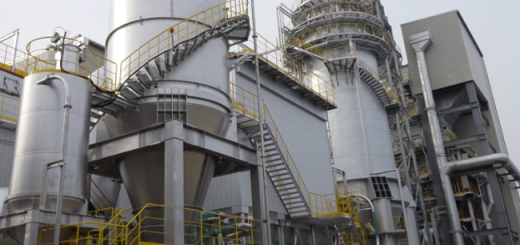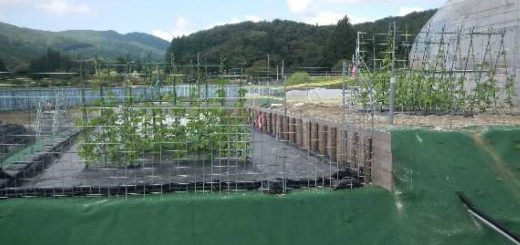Symposium on Final Disposal of Specific Radioactive Waste held in Iwanai Town, Hokkaido
By Hideyuki Ban (CNIC Co-Director)
More than a year has passed since the literature reviews began in October 2020 in Suttsu Town and Kamoenai Village, both in the Shiribeshi District of Hokkaido. The literature review is the first step of the process being pursued by the Nuclear Waste Management Organization (NUMO) in selecting sites for geological disposal of nuclear wastes, and is scheduled to take two years. The government is providing a subsidy of one billion yen each year (two billion yen in total) to each of the communities for the literature review. The cash distribution will also include communities in the vicinity of those two. Iwanai Town is adjacent to Suttsu Town, and is receiving an annual subsidy of 75 million yen. Recently, CNIC’s Co-Director Ban Hideyuki was invited to a symposium held in Iwanai Town on October 10. He wrote the following report of the symposium.
In the first session, Shimobori Tomokazu, who heads the radioactive waste management section of the Ministry of Economy, Trade and Industry (METI), talked about the government’s stance and ideas regarding final disposal of these wastes. A panel discussion was held in the second session, with four panelists: Sueda Kazuhide of “Nuclear Trash Campaign Kansai”; Tochiyama Osamu, technical advisor at the Nuclear Safety Research Association (NSRA); University of Tokyo Professor Tokunaga Tomochika; and myself. Oura Hiroteru of the NPO Mediators between Citizens and Science & Technology (MeCST) moderated the discussion. The main points of the talks were projected on slides.
Mayor Kimura Kiyohiko of Iwanai Town explained that the reason they were holding the symposium in his town was they considered it important to aim for mutual understanding with the town’s citizens on issues that will inevitably arise with geological disposal by openly sharing correct knowledge and reliable information. He explained that suspicions would arise that the reason the symposium was being held was because of the subsidy being provided to Iwanai Town for the literature review in Suttsu Town, but that his town had planned the symposium regardless of that.
In the first session, Shimobori Tomokazu used materials from METI’s website to introduce efforts that have been made so far (e.g. publication of maps of geological and other scientific properties, and activities to promote a nationwide dialog). One thing that made an impression was that he explained “I want to you to see this as something affecting you,” and said that, in other countries, both positive and negative information was being shared with the public so he would like Japan to do the same. In explaining things, people must necessarily present the results of their own perceptions. Also, they must implement measures based on data used currently, not future projections. Nonetheless, he failed to touch on inconvenient facts. In his remarks, he brought up Sweden as an example, where “employment opportunities have been created for nearly 900 people,” presenting the conjecture that “they plan to implement projects that will produce economic benefits totaling about 23 billion yen by 2025,” thus hinting at employment and economic benefits for communities that attract disposal sites. On the other hand, losses resulting from lower sales of local products also come to mind, but he said nothing about those.
The symposium’s organizers announced that there were 280 participants. The large hall at the Iwanai Community Culture Center served as the venue, with one person per three seats to provide social distancing as a COVID-19 countermeasure. About one third of the participants, however, left after hearing the first session. I had the impression they were recruited extras.
2nd Session Panel Discussion
The discussion had been scheduled to last 80 minutes. During the first 30 minutes, I spoke, followed by Sueda Kazuhide, with the moderator recapitulating our talks, which took a few minutes. This was followed by a total of 20 minutes of talks by Tochiyama Osamu and Tokunaga Tomochika with the moderator again recapitulating them for a few minutes. This was followed by 20 minutes of discussion. Shimobori’s speech had exceeded the time originally allotted for it, and Tochiyama also failed to observe time limits, so even with the ending time extended a little, no real discussion could get underway.
My talk centered on reforming the system, bringing up eight points: 1) the necessity of obtaining agreement from the governor for applying for literature reviews, 2) not providing subsidies at the literature review stage, 3) promoting continued discussion and research on storage of nuclear wastes, 4) confirming the types and amounts of high-level radioactive wastes, 5) indicating options for dealing with the wastes based on confirmed total amounts, and promoting discussion on them, 6) questioning safety, 7) creating criteria for retreating and a mechanism for overturning previous decisions, and 8) stopping to think rather than running ahead while thinking.
Sueda first talked about his motivation to launch an anti-nuke movement himself, and then made the following assertions: 1) reprocessing is done with the aim of extracting plutonium, not for creating high-level radioactive waste, 2) plans for disposal sites for canisters of vitrified waste are mere armchair theorizing (with disposal of spent fuel at these locations to follow), 3) transuranic (TRU) waste leaks to the surface ten years after disposal (natural barriers do not work), 4) many vitrified objects are flawed (presence of aqueous wastes that do not solidify as glass, called “yellow phase”), 5) glass shards and powder from them constitute TRU, and 6) the measure that ought to be taken is to shut down the nuclear power plants where these wastes originate.
In contrast, the talks by both Tochiyama and Tokunaga consisted of generalizations. They did not refute any of the issues we had brought up, but seemed intent on avoiding argumentation.
The content of Tochiyama’s talk was 1) to have appropriate fear of hazards and risks, 2) that the risks from geologic disposal could be reduced, 3) that the subterranean environment changes slowly and is stable, and 4) that it is necessary to select stable disposal sites through stepwise investigations, so they would be grateful if about ten communities would apply for the literature review.
The content of Tokunaga’s talk was 1) a general explanation of waste disposal principles such as detoxification, dilution, dispersal, etc., following by saying that for radioactive wastes it is necessary to concentrate them, reduce their volume and shut them away, using the best technology possible to isolate them from the living environment, 2) that wastes from nuclear power plants have already accumulated, 3) that the environment deep underground does not change readily and corrosion does not occur easily there, 4) that we are deepening our understanding of the subterranean environment through stepwise investigations, 5) that understanding by the nation overall would be cultivated, that knowledge of the region was important and that a sturdy but flexible system would be achieved, and 6) reversibility was being considered but the reversibility implemented at each stage would not only be the ability to retreat, but also include the ability to reevaluate the project, correct it, implement the corrections, etc.
The point that both of their talks shared was that, as a general principle, the subterranean environment is more stable than the surface environment, but is not well understood, so stepwise investigations are needed. Accordingly, they wish to be allowed to perform investigations. Moreover, both Shimobori and Tochiyama expressed hopes for investigations in about ten locations in Japan.
There was a question put forward by the moderator, Oura, beforehand, but not addressed in the first session and there were questions later regarding what the participants thought of the assertion that the risks underground were less than those at the surface. The former question was what the participants thought regarding areas, including Kamoenai, that had strata with “weak, water-cooled crushed rock with advancing fissures and groundwater penetration also resulting in fissures.” Tokunaga replied that it was necessary to investigate subterranean conditions. I spoke up to rebuff the argument about risks being lower underground, pointing out that on the contrary we couldn’t say these risks were low.
Neither Tochiyama nor Tokunaga gave any counterargument to the issues Sueda and I brought up with the disposal site selection mechanism or to the problem of defective vitrified bodies. Nor did they refute our assertion that spent nuclear fuel and spent MOX fuel would inevitably need to undergo disposal too. What Sueda had to say about yellow phase is pertinent—of 117 vitrified bodies produced in active testing, 63 were defective, containing yellow phase. The problem of defective vitrification has yet to be resolved technically, so the number of defective vitrified bodies will continue to increase in the future. When that happens, the whole basis of the safety evaluation falls apart.
Regarding the safety of geologic disposal, the author bases his evaluation on the case of hidden active faults producing fissures extending to the surface, which NUMO assumes in its TRU waste geologic disposal safety evaluation in “Comprehensive Technical Report; Realization of Safe Geological Disposal in Japan,” released in 2021, to be a rare phenomenon, but in such a case, it says annual radiation doses could reach 4 to 14 milliSieverts. From there, I took to heart the remarks of Chairperson Hatamura Yotaro in a report from the Investigation Committee on the Accident at the Fukushima Nuclear Power Station, “What is possible will happen. What you think is impossible will also happen,” and argued that we should assume that such conditions will occur and take measures to handle them. However, my point was never discussed. Tochiyama insists that the risk is extremely small, so it is safe. We must, however, consider that the impact in the event that this waste leaks out into the environment (resulting in exposure to animals, plants and humans) would continue over the long term. In some cases, the area could become uninhabitable (not recommended for residence). I thought that how this should be dealt with would be a relevant topic for the participants at the venue to discuss, but the discussion was never allowed to develop in that direction.


